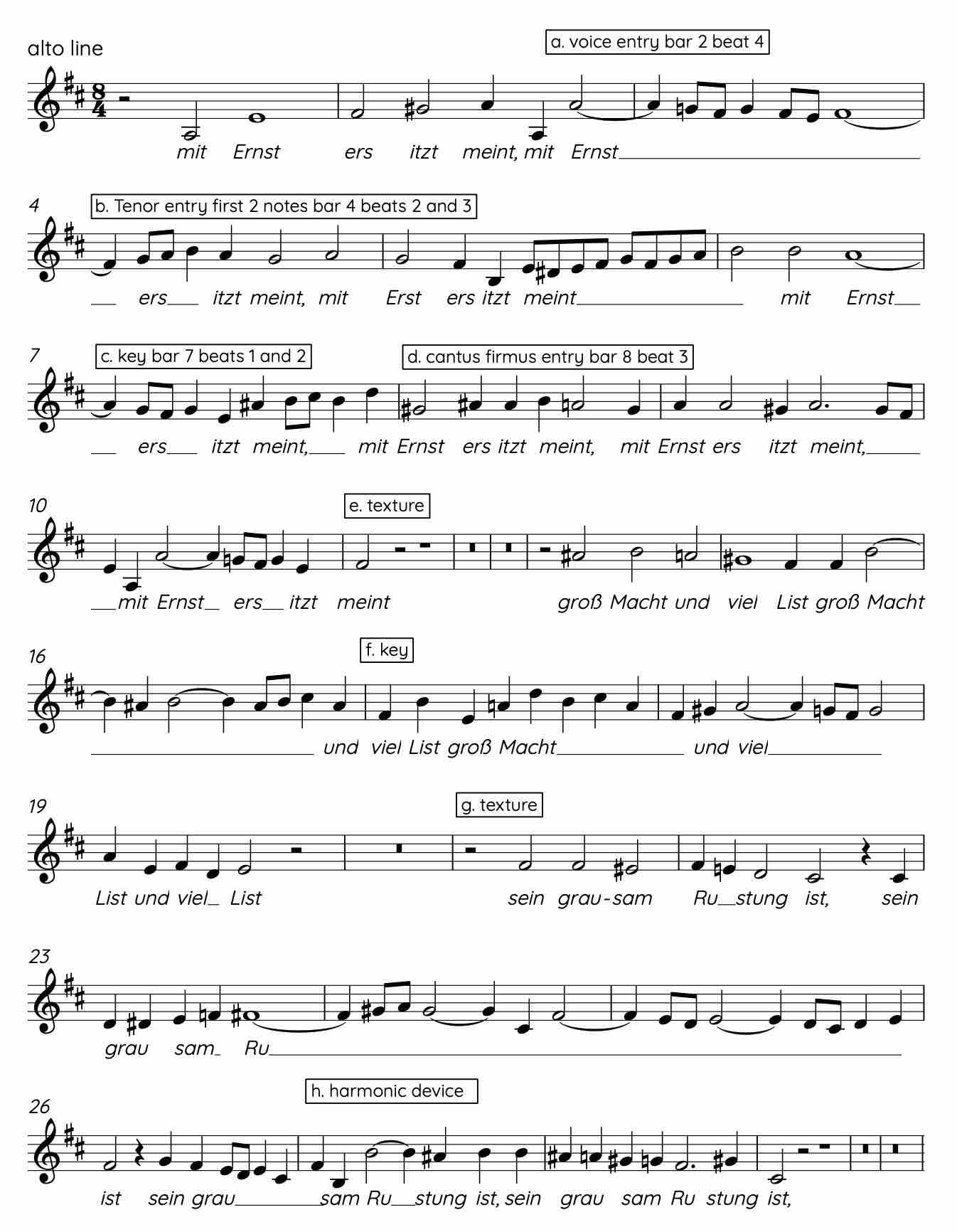- Published on
Bach Skeleton Score
This resource is specific to the Pearson Edexcel A level Music unit 3 exam.
It is made up of:
- a skeleton score
- section A style questions and answers
- a YouTube link to the track required to complete the questions
Suggested uses for teachers:
- the starting point for classwork discussions on how to approach skeleton scores, the types of questions asked, how to manage time
- as a model for devising your own skeleton score question packs as a class
- as test material (20 mins max) either in-class or set for homework
Suggested uses for students:
- to keep bringing your study and revision of set works back to 'sound'
- for exam practice - against the clock (20 mins max)
- to support meaningful annotation of the full score
- as a way of getting to know what types of things an examiner is looking for based on command words (e.g. name, describe, locate, identify, compare)
Play from 3'15 to pick up at the start of the skeleton score.
Skeleton score:

Questions:
(a) Which voice enters bar 2 beat 4? (1 mark)
- soprano
- tenor
- bass
(b) Name the first 2 notes of the tenor entry bar 4 beats 2 and 3 (2 marks)
(c) Name the key bar 7 beats 1 and 2. (1 mark)
(d) Describe the 5 note melodic shape of the cantus firmus entry bar 8 beat 3 to bar 9 beat 4 (3 marks)
(e) Describe the texture in bar 11. (2 marks)
(f) Name the key bar 17 beat 1. (1 mark)
(g) Describe the texture in bar 21. (2 marks)
(h) Name the harmonic device used in bars 27-28. (1 mark)
(i) Locate bars where timpani and trumpets are used. (2 marks)
(j) What larger genre is this work taken from? (1 mark)
Total 16 marks
Answers:
(a) Soprano (1 mark)
(b) 1 mark for each correct answer - max 2 marks
D and A
(c) Em (1 mark)
(d) 1 mark for each correct answer - max 3 marks
rising / mixture of step and leap / mixture of conjunct and disjunct / rising a 5th then moving by step / 1st, 5th, 6th, 7th, 8th degrees of the scale / octave range / anacrusis / semibreve to begin then 4 minims
(e) 1 mark for each correct answer - max 2 marks
tenors doubled by violas in unison / fugal subject over continuo bass line / heterophonic second half bar 11 and into bar 12
(f) Bm (1 mark)
(g) 1 mark for each correct answer - max 2 marks
Alto presents fugal answer doubled by vln 2 creating imitative counterpoint with sop / free counterpoint between fugal material and the continuo
(h) dominant pedal (1 mark)
(i) 1 mark for each correct answer - max 2 marks
timpani bar 9, trumpets bar 10 leading into bar 11
(j) sacred chorale cantata (1 mark)
Total 16 marks
Share the score and questions with students using this link:
(cover picture by Paul Kapischka on Unsplash)




